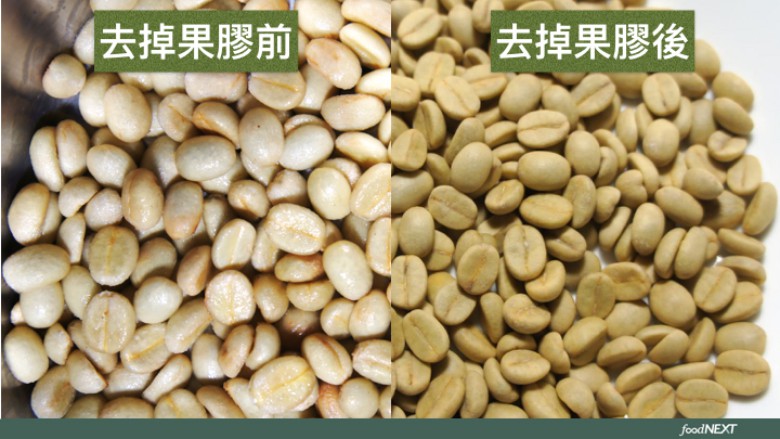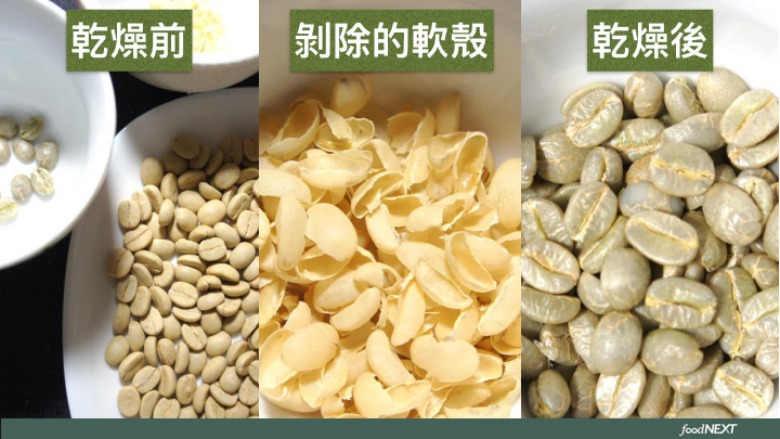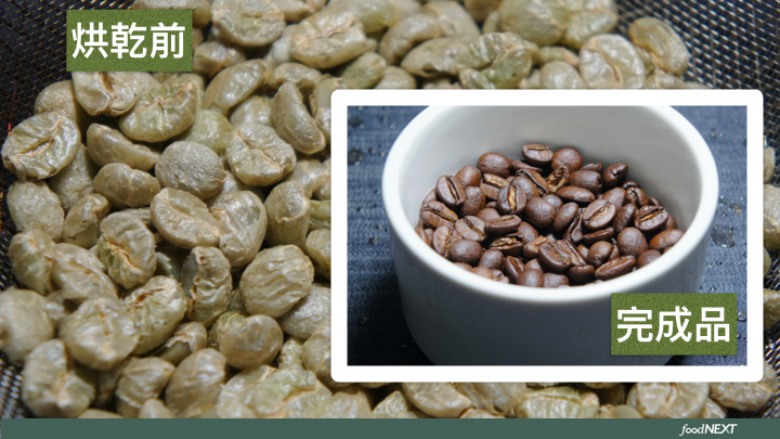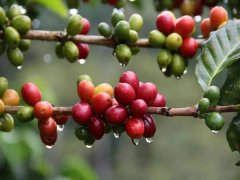How much are you willing to pay for this cup of coffee during the whole process of manual processing of raw coffee beans?
For professional baristas, please follow the coffee workshop (Wechat official account cafe_style)
Author = Huang Yileng
I once did a crazy experiment in which a relative of a neighbor grew coffee in Nantou water, so he gave me a bag of coffee beans. I was actually a little silly when I received it. I didn't quite know what to do with the bag of coffee beans. I also checked a lot of data on the Internet for this.
The coffee beans I received are about the size of a basin, and the unprocessed coffee fruit is red. The first step is to peel the beans, which feels a bit like peeling betel nuts. After peeling them, you will see the coffee beans wrapped in a thin layer of pectin. Then find a way to remove that layer of pectin.
There are two main ways to remove pectin. The most commonly used method is washing, or the ancient sunburn method. Generally speaking, these methods are used in the treatment plant, but I do not have the equipment of the treatment plant, and it happened to be winter when there was no sunshine. It is also impossible to take the sun treatment. While washing removes pectin through the fermentation process, I do not have the expertise. If I do not control the coffee beans properly, they will stink.
Later, it was found on the Internet that the third method was to use lime to remove that layer of pectin, but the tragic thing was that the pectin would not fall off itself after mixing with lime, but still had to be peeled off one by one with my fingernails. I didn't count the total number of coffee beans in that pot, but I only remember going out with my family that day and sitting in the back seat of the car with a bucket of coffee beans in my arms. I didn't get rid of all the pectin until I got home in the evening.

It's not easy to finish pectin, but it's not over yet. The next step is to dry the coffee beans. To keep the moisture content below 13%, I didn't have any practical equipment to measure it at that time. I could only judge by the color of the coffee beans.
So I left the coffee beans in the air outlet of the dehumidifier to dry, and then the coffee beans began to crack, which is a layer of soft shell outside the coffee beans, so I began to peel off the soft shells one by one.
After peeling off, the finished product will also have a thin film called silver skin. Sometimes in the process of baking beans, the silver skin will be burned by firepower, and the silver skin is healthy. If you have tried to peel off the silver skin and drink it in water, you will find that it tastes a bit like tea.

The next step is to continue the drying. I put the coffee beans in the electric stove and kept blowing the hot air. I forgot how long it took until the whole beans had shrunk, and then I threw the beans into the heater to continue to bake, so that the film outside the beans was burned. A complete big project like this will take about two whole days, and the last one is the coffee beans we usually see.

At first, I started peeling from a large bag of coffee fruit, but in the end, there were about five cups of coffee beans after drying, and there were only three cups of coffee left after grinding. Therefore, you might as well think about how much you are willing to pay for a cup of coffee.
Important Notice :
前街咖啡 FrontStreet Coffee has moved to new addredd:
FrontStreet Coffee Address: 315,Donghua East Road,GuangZhou
Tel:020 38364473
- Prev

Kopi Luwak was defeated. Geisha coffee is the most expensive coffee in the world.
Professional baristas please pay attention to the coffee workshop (Wechat official account cafe_style) Panamanian coffee Panamanian jade villa garden geisha (Hacienda La Esmeralda Geisha) coffee originating from a wild species in Ethiopia, growing at 1700 meters above sea level. Its dry fragrance is floral, citrus, berry and honey, while its wet fragrance is berry, floral, grease, vanilla and orange.
- Next

The gap between high-quality coffee and instant coffee powder, defective beans affect the quality and flavor
Exchange of professional baristas please pay attention to the aroma of a cup of coffee in the coffee workshop (Wechat official account cafe_style) to remind us of the importance of proper preservation of raw materials during food journey, the quality of coffee beans affects the flavor when drinking, and even improperly stored coffee beans may contain toxins, long-term consumption may have consequences on health. Passing the standard is fine coffee. We are buying raw beans.
Related
- What is the difference between a cake filter cup and a V60 conical filter cup? What are the advantages and disadvantages of the flat-bottomed filter cup brewing solution?
- What is the difference between fine coffee powder and medium coarse coffee powder? Do I need to sift out the fine coffee powder for making coffee by hand?
- Why does hot American coffee taste bitter? Difference in proportional concentration between hot American and ice American
- Is espresso stored overnight in the refrigerator harmful to your body? Is frozen coffee better than freshly ground coffee?
- What parameters and proportions of water temperature should be used to grind and brew fresh coffee beans? Why can't I drink freshly roasted coffee right away?
- Customers have "changed" Manner's new products! Shop assistant: Please don't mess around!
- Remove sockets in customer areas at Starbucks stores?! Netizen: I won't go if I really tear it down
- What is the difference between the taste steps of sun-dried coffee and washed coffee? Why is sun-cured coffee sweeter and washed coffee sour?
- The recipe for salty grapefruit dirty is revealed! Coffee Festival salty grapefruit dirty coffee making materials parameters ratio milk share!
- How about the flavor of Sunlight 74158 at Sidamo Banshaha Mathieu Processing Factory in Ethiopia? 74158 Share the proportion of coffee brewing parameters!

